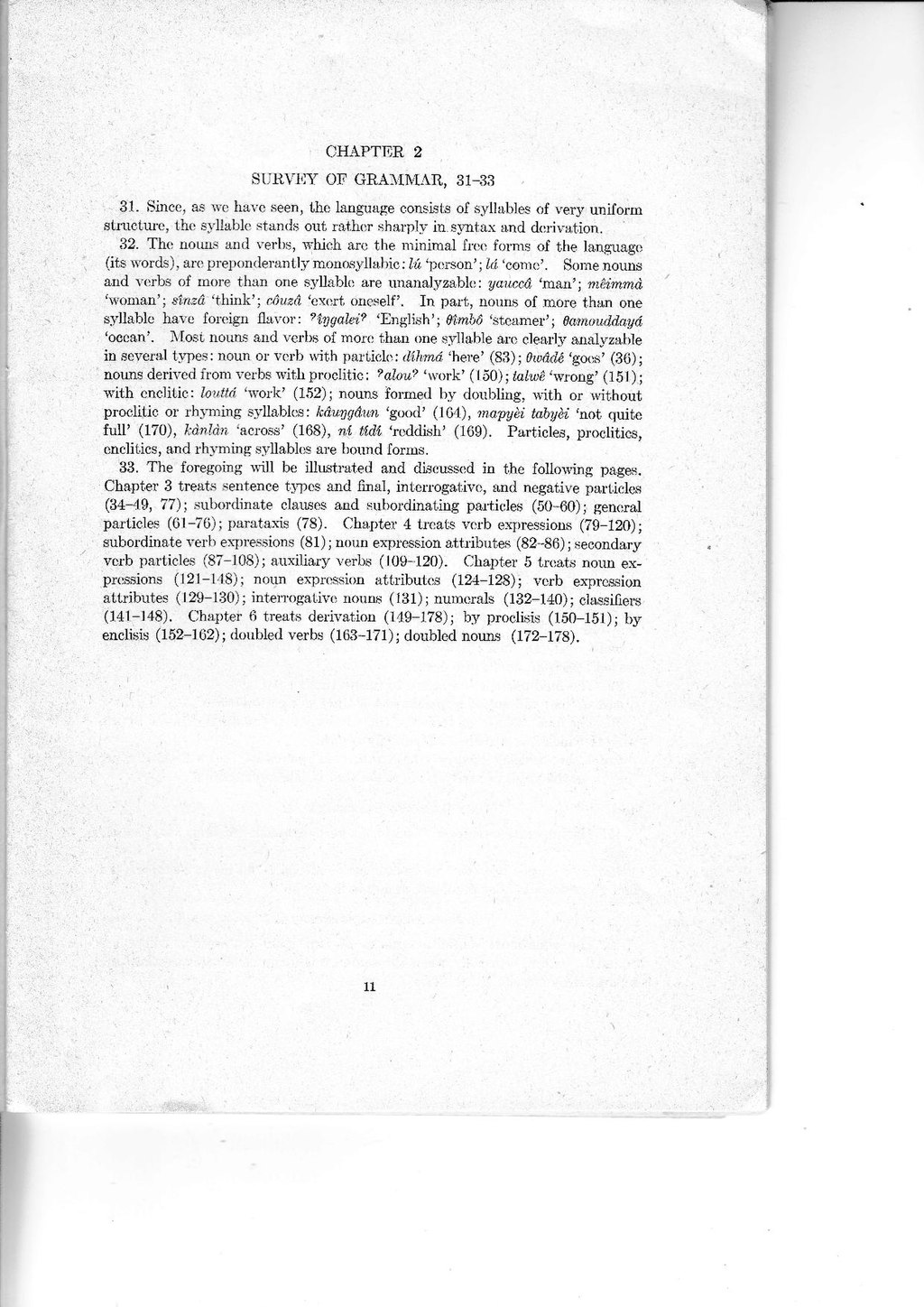CHAPTER 2
SURVEY OF GRAMMAR, 31–33
31. Since, as we have seen, the language consists of syllables of very uniform structure, the syllable stands out rather sharply in syntax and derivation.
32. The nouns and verbs, which are the minimal free forms of the language (its words), are preponderantly monosyllabic: lú ‘person’; lá ‘come’. Some nouns and verbs of more than one syllable are unanalyzable: yauccâ ‘man’; mêimmà ‘woman’; sînzâ ‘think’; côuzâ ‘exert oneself’. In part, nouns of more than one syllable have foreign flavor: ɁîŋgaleiɁ ‘English’; θîmbô ‘steamer’; θamouddayá ‘ocean’. Most nouns and verbs of more than one syllable are clearly analyzable in several types: noun or verb with particle: díhmá ‘here’ (83); θwâdé ‘goes’ (36); nouns derived from verbs with proclitic: ɁalouɁ ‘work’ (150); talwê ‘wrong’ (151); with enclitic: louttá ‘work’ (152); nouns formed by doubling, with or without proclitic or rhyming syllables: kâuŋgâun ‘good’ (164), mapyèi tabyèi ‘not quite full’ (170), kànlàn ‘across’ (168), ní tídí ‘reddish’ (169). Particles, proclitics, enclitics, and rhyming syllables are bound forms.
33. The foregoing will be illustrated and discussed in the following pages. Chapter 3 treats sentence types and final, interrogative, and negative particles (34–49, 77); subordinate clauses and subordinating particles (50–60); general particles (61–76); parataxis (78). Chapter 4 treats verb expressions (79–120); subordinate verb expressions (81); noun expression attributes (82–86); secondary verb particles (87–108); auxiliary verbs (109–120). Chapter 5 treats noun expressions (121–148); noun expression attributes (124–128); verb expression attributes (129–130); interrogative nouns (131); numerals (132–140); classifiers (141–148). Chapter 6 treats derivation (149–178); by proclisis (150–151); by enclisis (152–162); doubled verbs (163–171); doubled nouns (172–178).
